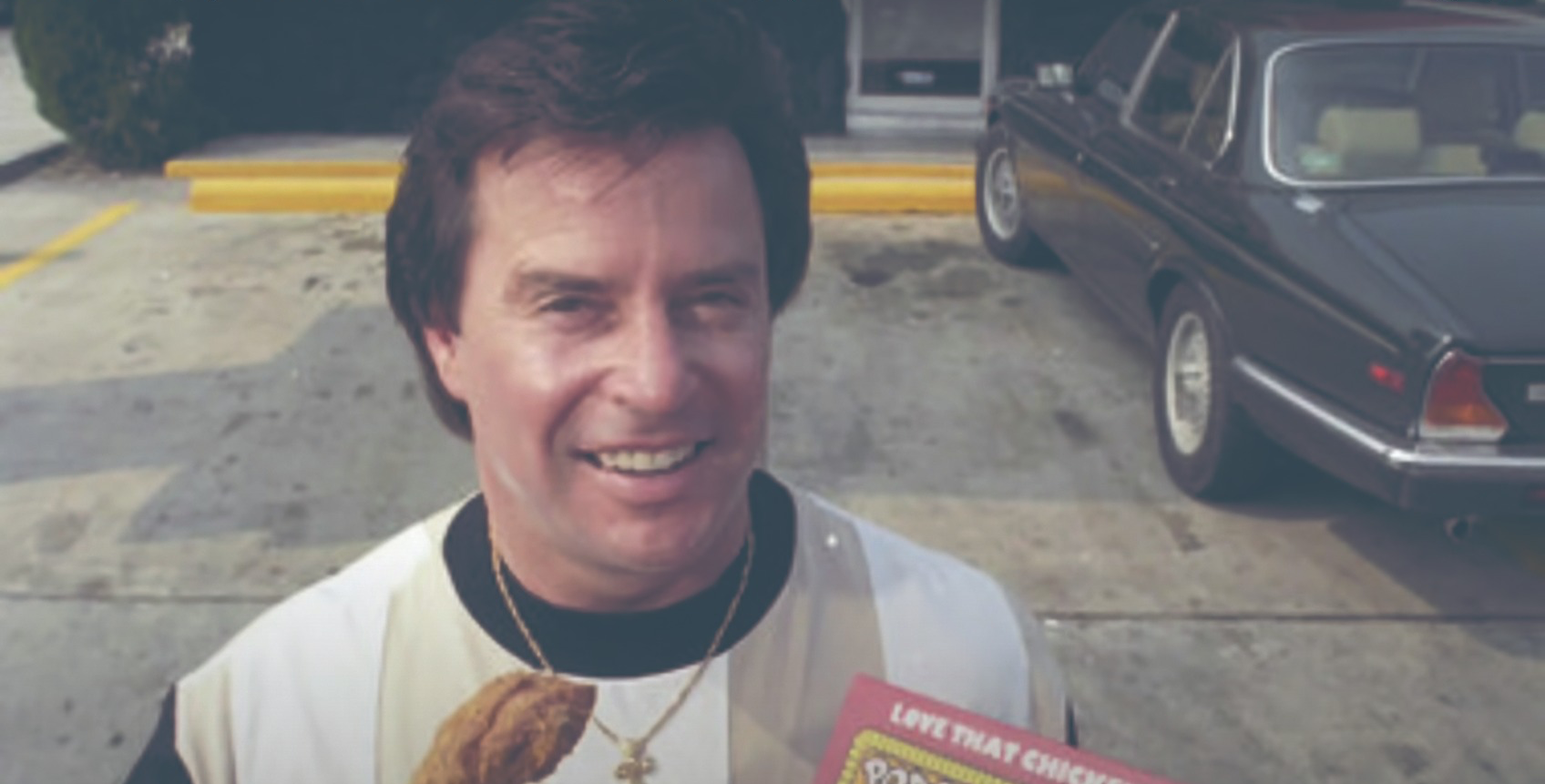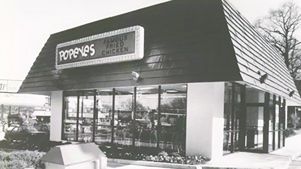Are you craving some juicy spicy fried chicken and wondering about the mastermind behind your favorite fast-food joint? Well grab your napkins because we’re diving into the flavorful story of Popeyes and its larger-than-life founder!
The Birth of a Chicken Empire
Alvin Charles “Big Al” Copeland Sr. was the man who brought that Louisiana spice to the fast-food world when he founded Popeyes back in 1972. Born on February 2, 1944, in New Orleans, Louisiana, Copeland had humble beginnings that make his success story even more impressive.
His childhood wasn’t easy – Copeland’s father left the family shortly after Al (the youngest of three sons) was born, and the family even lived in the St. Thomas public housing project at one point. Talk about a challenging start!
From High School Dropout to Entrepreneur
Believe it or not, Al Copeland didn’t even finish high school! He dropped out at age 16 and started working at Schwegmann Brothers Giant Supermarkets in Gentilly as a soda jerk Later, he worked for Tastee Donut, a doughnut chain partially owned by his brother, Gil.
At just 18 years old, Copeland showed his entrepreneurial spirit by selling his car to purchase one doughnut location from his brother. This experience introduced him to the restaurant business and franchising concepts that would later shape his empire
The Chicken That Almost Wasn’t
Here’s a fun fact that might surprise you: Popeyes wasn’t an instant success! The restaurant originally opened as “Chicken on the Run” in Arabi, a suburb of New Orleans in St. Bernard Parish. After struggling initially, Copeland rebranded the restaurant as “Popeyes” within just a few months.
And no, it wasn’t named after the spinach-eating sailor! Copeland named his restaurant after Jimmy “Popeye” Doyle, a character from the 1971 movie “The French Connection.” How’s that for a bit of trivia to share at your next dinner party?
Turning Up the Heat: Popeyes Takes Off
Copeland’s decision to focus on spicy, New Orleans-style chicken was a game-changer. The bold flavors set Popeyes apart in the fast-food market, and customers couldn’t get enough.
By 1976, Copeland began franchising his restaurant, opening the first franchise location in Baton Rouge, Louisiana. Over the next decade, approximately 500 outlets were added, followed by 200 more during a period of slower expansion. The growth was explosive!
The Rise, Fall, and Rise Again
Copeland’s ambition led to major moves in the fast-food industry. In March 1989, Popeyes (then the third-largest chicken chain) purchased Church’s Chicken, the second largest. The combined company had over 2,000 locations.
But sometimes ambition can lead to challenges. The Church’s purchase was heavily financed, and by 1990, Al Copeland Enterprises had accumulated $391 million in debt. By April 1991, that debt had grown to more than $400 million, forcing Copeland to file for Chapter 11 bankruptcy protection.
In October 1992, a bankruptcy court approved a plan submitted by Copeland’s creditors that created America’s Favorite Chicken Company, Inc. (AFC) as the new parent company for Popeyes and Church’s.
Though Copeland lost control of Popeyes in the bankruptcy, he smartly retained the rights to some recipes and products, manufacturing spices through his Diversified Foods & Seasonings plants. This contract with Popeyes extends through 2029 – talk about playing the long game!
Beyond Chicken: Copeland’s Other Ventures
Al wasn’t just about chicken. He owned several restaurant chains including Copeland’s, Copeland’s Cheesecake Bistro, Amor deBrazil, Straya, and Copeland’s Social City. He also owned the Improv comedy clubs in California and Pittsburgh, as well as three hotels.
The Man Behind the Brand: Copeland’s Flamboyant Lifestyle
Copeland became a New Orleans icon due to his over-the-top lifestyle. He loved power boat racing, had extravagant weddings (he was married four times!), and was famous for his annual Christmas light display at his mansion in Metairie.
His Christmas light display was so spectacular that the Today show ranked it in the top three nationally! It became such a huge attraction that the Jefferson Parish Sheriff’s Office had to provide traffic control as cars would back up into surrounding subdivisions.
Not everyone was a fan of the display though – in 1983, his neighbors sued to have it removed! In 1991, a judge permitted Copeland to display a scaled-down version.
Personal Life and Legacy
Al Copeland was a family man with nine children – five sons and four daughters – by his four wives. His eldest son, Al Copeland Jr., became the CEO of Al Copeland Investments in 2003.
Though he never completed high school, Copeland used his wealth to benefit education programs. He established the Alvin C. Copeland Endowed Chair of Franchising at Louisiana State University, provided funding for the Delgado Community College chef apprentice program, and supported the National Food Service Institute.
The Final Chapter
Sadly, in December 2007, Copeland was diagnosed with a malignant tumor of the salivary glands caused by Merkel cell carcinoma, a rare form of cancer. Despite seeking experimental treatments in Germany, he passed away in Munich on Easter Sunday, March 23, 2008, at the age of 64.
After his death, the Al Copeland Foundation was established, providing cancer services primarily at Louisiana State University. The foundation established the Al Copeland/Cancer Crusaders Endowed chair in Endocrine Cancer at LSU in 2011.
Popeyes Today: The Legacy Continues
Today, Popeyes is owned by Restaurant Brands International (RBI), which acquired the chain in 2017 for $1.8 billion. RBI is a Canadian-based multinational fast-food holding company that also owns Burger King, Tim Hortons, and Firehouse Subs.
As of 2025, Popeyes has over 4,300 restaurants worldwide, operating in more than 30 countries. The brand is valued at approximately $4 billion, a significant growth from its $1.8 billion valuation at the time of acquisition.
The Spice Lives On
What started as one man’s dream in a New Orleans suburb has grown into a global phenomenon. Al Copeland’s story reminds us that success isn’t always a straight line – there can be failures, bankruptcies, and challenges along the way. But with persistence, innovation, and a really good chicken recipe, amazing things can happen!
The next time you’re enjoying that spicy Popeyes chicken, remember the high school dropout who had the vision and determination to create one of America’s most beloved fast-food chains.
Fast Facts About Al Copeland and Popeyes
- Founded: 1972 in Arabi, Louisiana
- Original Name: “Chicken on the Run” (quickly rebranded to Popeyes)
- Named After: Jimmy “Popeye” Doyle from the movie “The French Connection”
- First Franchise: Opened in Baton Rouge, Louisiana in 1976
- Current Ownership: Restaurant Brands International (since 2017)
- Global Presence: Over 4,300 restaurants in 30+ countries as of 2025
- Current Value: Approximately $4 billion
FAQs About Popeyes and Its Founder
Who founded Popeyes Chicken?
Alvin Charles “Big Al” Copeland Sr. founded Popeyes in 1972.
Did Al Copeland still own Popeyes when he died?
No, Copeland lost ownership of Popeyes during bankruptcy proceedings in the early 1990s, though he maintained ownership of the recipes and spice blends through his company Diversified Foods & Seasonings.
What celebrity owns Popeyes?
In 2021, rapper Megan Thee Stallion became a Popeyes franchise owner as part of a collaboration that included her signature “Hottie Sauce.” She is set to open her own Popeyes restaurant in Houston in 2025.
Is Popeyes still using Al Copeland’s recipes?
Yes! Even though Copeland lost control of the restaurant chain, he retained rights to the recipes. His company, Diversified Foods & Seasonings, has a contract with Popeyes that extends through 2029.
So there you have it – the spicy tale of how a high school dropout with big dreams created one of America’s favorite chicken chains. I think we can all agree that Al Copeland’s legacy is finger-lickin’ good!

Popeyes Fried Chicken Expands
Popeyes was expanding regionally, nationally, and internationally throughout the 1980s, and it was a time of innovation and experimentation for the brand. The slogan “Love that Chicken” was created in 1980, the buttermilk biscuits were introduced in 1983, and crawfish were available on the menu for a time in 1989. By 1985, there were 500 Popeyes locations including Canada. Al Copeland founded Al Copeland Enterprises during this period to house Popeyes as well as his other new chains including Copelands Restaurant which began in 1983. He also founded Diversified Food & Seasonings in 1984, which supplied Popeyes with proprietary products and seasonings for their restaurants.
As exciting as the 1980s were for Popeyes, however, the 1990s would usher in massive changes.
In 1990, Copeland Enterprises was in default due the purchase of Churchs Chicken in 1989 for the sum of $392 million. The entity filed for bankruptcy in 1991. A year later, the court agreed to the formation of Americas Favorite Chicken, Inc. (AFC) which would be the new parent company of both Popeyes and Churchs, and AFC would be owned by the creditors from whom Al lent money. Though Al no longer owned Popeyes, he retained some control due to a deal in which his company Diversified Foods & Seasonings was the supplier of all Popeyes restaurants, and Popeyes was obligated to pay fees totaling several million dollars each year to use Als patented spice blends and food preparation techniques.
Under the ownership of AFC, Popeyes expanded bigger than ever. The chain spread to places like Malaysia and Australia to great success. In 1999, Popeyes celebrated making over $1 billion in annual sales. AFC went public in 2001 with an initial public offering of $142,818,479. Popeyes once again changed its name and rebranded as Popeyes Louisiana Kitchen in 2008.
The 2010s were very exciting years for the Popeyes empire. The restaurant chain finally acquired control over its recipes from Diversified Foods & Seasonings on June 17, 2014 for the price of $43 million. Then, Popeyes was purchased by Restaurant Brands International on February 21, 2017 for $1.8 billion.
Popeyes Fried Chicken’s Origin Story
Popeyes was conceived by the late eccentric and genius businessman Al Copeland. Al worked at several now-iconic local food brands as a young man. He left school at the age of 16 and worked at Schwegmanns Grocery in Gentilly and at Tastee Donut, which Als brother Gil partially owned. At the age of 18, Al sold his car to purchase a Tastee Donut from Gil, and it was there that he learned how to manage a food service business.

In his late 20s, Al decided to open a new restaurant that would serve traditional southern fried chicken. He opened Chicken on the Run in Arabi on June 12, 1972, but it closed down after just a few months. Four days later, the restaurant reopened with the new name and a new style of fried chicken. Popeyes Mighty Good Chicken, named after Popeye Doyle of The French Connection, served a spicier fried chicken that was a huge hit with customers. By 1975, the restaurant changed its name to Popeyes Famous Fried Chicken.

Al knew that he had a business model and recipes that could be very successful, so he quickly started franchising Popeyes. The first franchise opened in Baton Rouge in 1976.
You may remember Popeyes being synonymous with Popeye the Sailor. Though it wasnt named for the beloved cartoon character, Popeyes obtained the rights from King Features Syndicate to use the characters from the show for their marketing, decoration, and packaging for 35 years. The fledgling chain also sponsored Popeye & Pals cartoons on local television.

The menu in the early days looked very different than it does today. You could get buckets of fried chicken, but the dinners you could order included clams and livers and gizzards. The dinners were served with your choice of rice dressing and a roll or French fries and a roll. The side orders included bar-b-que beans, onion rings, chicken tacos, corn dogs, and corn on the cob. A 10-piece bucket cost $4.49. A 3-piece dinner that came with either rice dressing or French fries and a roll would be about $1.69. All of the side items cost less than 60 cents for an individual serving.
